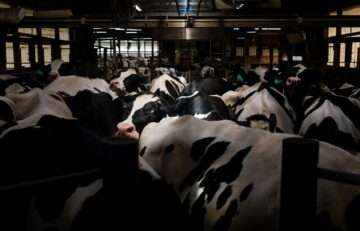Smriti Mallapaty in Nature:
 “This virus in its current state does not look like it has the characteristics of causing a pandemic. But with influenza viruses, that equation could entirely change with a single mutation,” says Scott Hensley, an immunologist at the University of Pennsylvania in Philadelphia.
“This virus in its current state does not look like it has the characteristics of causing a pandemic. But with influenza viruses, that equation could entirely change with a single mutation,” says Scott Hensley, an immunologist at the University of Pennsylvania in Philadelphia.
The highly pathogenic avian influenza H5N1 has so far been detected in 145 cattle herds and 4 farm workers in a dozen states across the United States. Researchers say many more cases in cows and people have probably gone undetected. The chances of quashing the outbreak get “more slim by the day”, says Angela Rasmussen, a virologist at the University of Saskatchewan in Saskatoon, Canada.
Studies suggest that the virus is spreading between cows through contaminated milking equipment1,2, rather than airborne particles. The biggest risk is that it could evolve to infect mammals more effectively, including through the respiratory system, which would make it more difficult to contain. Given the close and regular contact that cows have with people, airborne transmission could spark a pandemic.
More here.
Enjoying the content on 3QD? Help keep us going by donating now.
